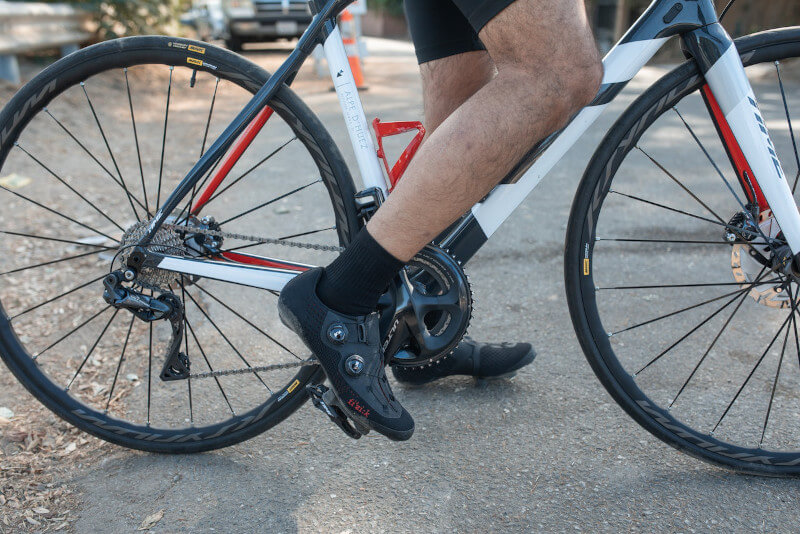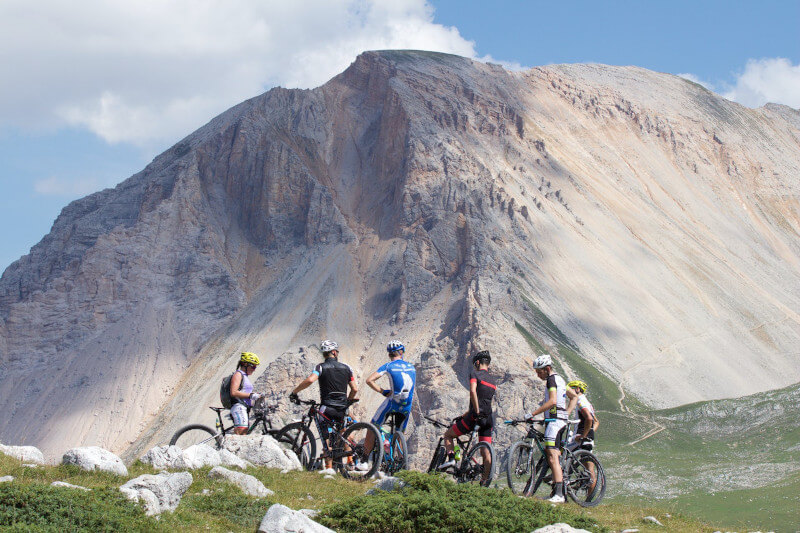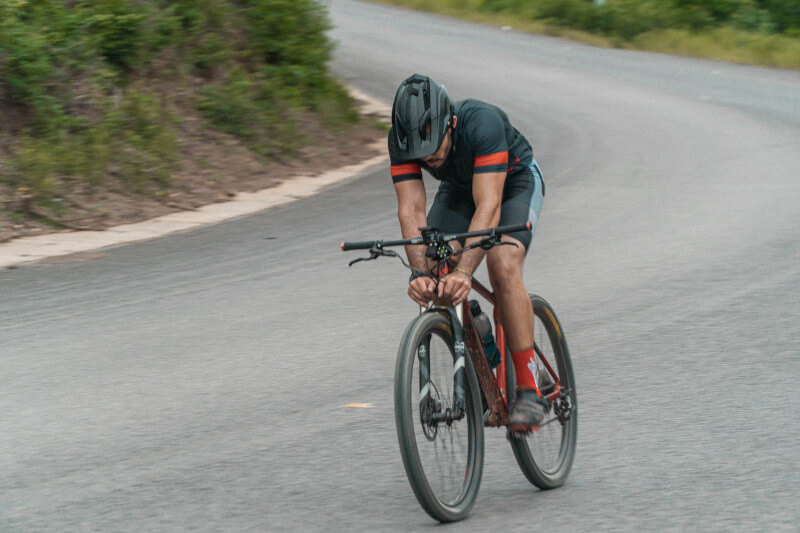Use these four laser-focused strength exercises to improve your pace, climbing potential, muscle imbalance, and overall riding strength.
Training courses, fitness videos, and blog posts that promise to keep you in form abound on the web makes it easy to feel overwhelmed by the quantity of information available. This is because training and coaching advice regularly filters down from the pro level. This is due to the fact that professionals require rigorously surveilled training in order to maximize every potential watt for even the lowest of increases. Cycling workouts, on the contrary, do not have to be overly complex for the average rider looking to improve their athletic performance, speed, and endurance.
In fact, all you need to do is hop on your bike and ride regularly; this will serve as the base of your foundation. The next step is to expand on that foundation by focusing on a few key cycling sessions that will polish specific skills. This strength training list will give you everything you need to get started.
Pedal Practice is the First Cycling Exercise

Low-intensity cycling exercises, like the one designed by Kristen Arnold, M.S., R.D., C.S.S.D., a level 2 USA Racing coach, are an excellent method for addressing muscular imbalances and weaknesses. You should make a point of devoting some time throughout the week to these issues. “It’s best to do this workout on a day when you’re presumed to be bouncing back,” she adds. “Even so, it helps make the most of your time through including low-intensity but extremely beneficial pedaling form and effectiveness drills.”
When should this task be completed: once per week
Here’s how to do it: Cycling for the initial five minutes of your warmup at a rate of perceived exertion (RPE) of 2 or 3 is a good place to start. On a scale of one to ten, with one representing the least amount of work and ten representing all-out effort, one representing the lowest level of effort. Then, for one minute, pedal at a cadence of 100 to 120 revolutions per minute while maintaining the same frequency of perceived exertion. Relax for 2 minutes while riding at a comfortable pace for you. Maintain your cadence between 100 and 120 for that one minute of pedaling five times through.
Complete 30 seconds of spin-ups, starting with a cadence of 50 rotations per minute (rpm), then ramping up to a high cadence while increasing your RPMs. We recommend doing this with a light effort and cycling fast enough that you can feel yourself bobbing in and out of the seat by the time the 30 seconds are up. During the two-minute rest period, you can ride at any cadence. This sequence of spin-ups must be repeated five times.
After that, complete five minutes of spinning at an RPE of two to three. Following that, devote the next ten minutes to conducting single-leg drills: You’ll start by pedaling with one leg at a time, to complete as many rotations as possible while maintaining good technique. Then proceed to the next leg.
Finally, for five minutes, pedal at an RPE of 1 or 2 to bring your heart rate under control.
Cycling Workouts No. 2: Tabata Cycling Routines

These all-out efforts, named after the workout scientist Izumi Tabata, train your body to recruit the greatest number of muscle fibers and fire them as quickly as possible. Furthermore, they raise your lactate threshold, making some of the most challenging rides feel easier. They also help you maintain your valuable level of fitness when your time is short and you are unable to ride for prolonged periods of time.
Because they are so brief, it is very easy to mentally prepare for them (one set takes just four minutes, which includes the rest intervals). Including them in your regular exercise regimen will help you see results much faster. Exercisers who added just one high-intensity interval session, such as Tabatas, to their usual moderate cardio-training routine enhanced their VO2 max by 10%, compared to a 3.9-percent improvement among their peers who only did moderate training. The findings were published in the International Journal of Sport Science and Medicine.
When should this task be completed: once a week
To begin, ride your bike gently for the first 5 to 10 minutes of your warm-ups. After that, pedal as hard as you can for twenty seconds, aiming for your absolute maximum power output. After that, pedal steadily for ten seconds to give your heart rate time to return to normal. It should be repeated eight times. Take a four to five-minute break. If interval training is something you’re used to, repeat the prerequisites for another set, or two if you’re feeling particularly ambitious. If you’re new to interval training, begin with just one set.
The Third Cycling Workout in This Series Focuses on Hill Climbs

You may need a lot of practice and time before you can tackle a hill effectively, but it’s a strategy you’ll want to master. As a result, you should incorporate this cycling session into your training regimen as soon as possible. Hill drills can help you improve your ability to scale hills while maintaining your speed. ” Many cyclists have the routine of taking it easy at the top of climbs or just before reaching the summit during races and rides alike. Despite the fact that it may be appropriate for everyday riding, this mitigates speed.”
These hill training exercises will help you concentrate on elevating your speed at the right time to avoid this issue. To achieve maximum speed in a race or rigorous ride, one must sustain their velocity and power to the high point of a rise and then abstain from slowing down until the climb has begun to decline.
When should this task be completed: once a week
Recommendations: Perform this workout on a single climb or a series of climbs in close vicinity to one another. At the ideal pace, it should take you between three and seven minutes to reach the top of the hill. If you are doing this activity inside, be aware that you will be climbing for three to seven minutes while gradually increasing your resistance.
First, perform a 15-minute warmup at an RPE of 2 to 3. Next, start climbing the hill at an RPE of 8, and one minute before reaching the summit (or the final minute of your indoor hill climb), increase your RPE to 9. You should approach the crest of the hill, and keep your speed up to the point where you are on the verge of spinning out as you start your descent (make sure to lower resistance, when indoors, to something light that mimics your downhill). During the three-minute recovery period, you should keep pedaling at an RPE between 1 and 3. This climbing exercise will be repeated four times.
Finish your training session with 15 minutes of easy cycling at an RPE of 1 or 2 to cool down.
The 4th Cycling Workout Focuses on Threshold Drills

Increasing your lactate threshold is the first step toward better cycling. This allows you to generate more power while retaining a steady heart rate. To increase your power at the threshold, perform long, consistent intervals at a pace that is either right at or slightly below your limit. This is most likely the most effective method.
These intervals are especially beneficial for individuals who live in low-lying regions and want to improve their ability to climb hills without physically traveling to higher ground. Just ask Victoria DiSavino of Buffalo, New York, who set the female’s Mount Washington Half Marathon record of 1:07:32. “I work very long hours, so I don’t have the chance to travel to the hills to workout,” she explains. “I just go out and complete three 20-minute efforts at the threshold, which is roughly equivalent to the power you use to climb Mount Washington,” I explained. “It’s the same thing.”
Although threshold drills are not difficult to perform, they do require concentration because it is easy to let your thoughts (and effort) wander throughout them.
When should this task be completed: once per week
How to accomplish it: After a good warmup of at least 5 to 10 minutes of effortless pedaling, ride for 10 minutes at a steady effort, at an exertion level of 6 to 7 RPE, approximately 85% of your maximum heart rate, and where you can only speak a few words at a time. Take a five- to ten-minute break to rest (the aim here is adequate recovery, which will allow you to keep up your target intensity for the subsequent session). This push for 10 minutes and recovery for 5 to 10 minutes must be repeated three times for a total of three rounds.
As soon as they become second nature, you can increase the work period to two to three cycles of 20-minute steady-state efforts, with 10 to 20 minutes of recovery time in between.
Source: bicycling.com

Get ready, because ‘Train Like Nicolas Anelka by Coach Meddy’ is about to revolutionize your…

